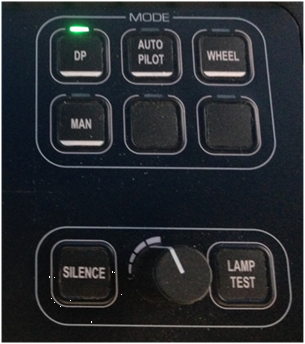The Drill Down, Issue #7: Lessons Learned - Dynamic Positioning Ergonomics
 NOTE: This document was previous published on 23 September 2015 by the OCS NCOE as a “Lessons Learned” document. It is being republished as an issue of the Drill Down for archiving purposes.
NOTE: This document was previous published on 23 September 2015 by the OCS NCOE as a “Lessons Learned” document. It is being republished as an issue of the Drill Down for archiving purposes.
Did I push the right button?
A drillship had a recent near-miss while drilling an exploratory well in the Gulf of Mexico. The event provided several lessons learned for vessels with dynamic positioning (DP). The vessel was conducting what seemed to be a simple maintenance procedure on a thruster. However, human errors with a mix of ergonomics got involved and resulted in a position loss within five feet of a “yellow” condition. The incident was caused due to the proximity of buttons to one another as well as the number of alarms a DP operator (DPO) receives.
Incident
On Tuesday night the drill crew shut in the well with the blow out preventer after detecting a “kick”. The crew began to circulate the “kick” with kill weight mud. The circulating operation continued through Friday.
On Thursday a work permit was signed to take a thruster offline to perform some maintenance. The technician cleared taking the thruster offline with the DPO. When the technician took the thruster offline, the DPO received a series of alarms. The DPO silenced the alarms individually as required by the system. The DPO accidentally double-pressed the “manual” button while reaching across the console and not verifying which button was being pushed (Figure 1).
A double-press of the manual button places all thrusters onboard in manual control. The DPO then received the alarm for manual control of all thrusters. The DPO realized the mistake and placed the thrusters back into “DP” mode, which brought the vessel back on location within about a minute after a thirteen foot excursion.

Figure 1: The “Man” and “Silence” buttons are roughly ¾ of an inch apart. Also, white lines on buttons require double push within 5 seconds.
Lessons Learned
- Do my work permits adequately identify the risks?
- Does my well specific operating guideline take into account well control operations?
- Should certain controls on a DP system be protected from accidental activation? (A cover was later added in this case)
- Is there good communication between the drill floor and the bridge during simultaneous operations?
- When the bridge receives multiple alarms, is the DPO taking the extra second to recognize the alarm before the proper action?